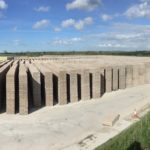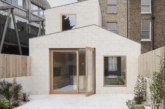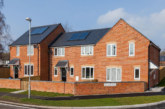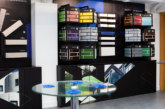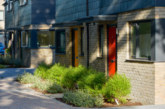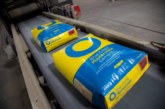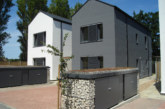The Concrete Block Association’s Product Officer, Chris Stanley, discusses what issues will drive the housebuilding industry agenda in 2019 and introduces its ‘Better Built in Blockwork’ campaign, designed to improve construction material choices and methods.
Looking back on 2018, debate in the housebuilding industry revolved around three key issues: sustainability, fire safety and new build targets.
Sustainability is a long-term challenge and the construction sector is expected to play its part in developing eco-friendly solutions. As such, it’s important future housing is long-lasting and fit-for-purpose, adaptable to predicted fluctuations in climate and weather conditions. To deliver we need to focus on energy efficiency.
Looking to fire safety, the government has already confirmed it will implement all of the Hackitt Report’s recommendations from the outset, but I predict more stringent and holistic regulations across the board, not just for high-rises, and not just for cladding.
Furthermore, as new start rates increase to meet the government’s targets, it’s imperative we don’t ‘dash for trash’ but build for longevity.
Digging deeper into these three topics we can appreciate those areas in which housebuilders can improve their methods and approach – and how we can assist them through our ‘Better Built in Blockwork’ initiative.
Thermal efficiency
The makeup of a building plays a huge role in delivering energy efficiency. To reduce energy needed for heating or cooling a building, a high-performance building envelope is essential. However, thermal bridging remains a problem in many new builds. Frankly, it really should be a greater concern than it’s currently perceived, as it can cause up to 30% of a building’s heat loss.
Fundamentally, to mitigate the effects of thermal bridging, an understanding of U-values (thermal transmittance) is essential. The equation to determine this is, however, a complex one but important to know.
To make life easier, last year we developed U-value calculator. Simple to use it’s designed to assist specifiers in selecting the right, highest-performance materials for their build. As such there can be no excuse for ignoring the impact of thermal bridging and subsequently preventing it.
Fire safety
Post-Grenfell, and the resulting Hackitt Report, concern about fire-resilience and compartmentation has made concrete an especially compelling choice of material. I expect this will lead to the increased use of concrete blocks for partitions in commercial and non-public housing projects instead of lightweight partitioning.
Building with concrete makes for comfortable homes as the thermal mass helps keep temperature optimal all year round with less overheating in summer and less heat loss in winter. The most obvious benefits include fire and flood resistance, longevity, durability, moisture- and rot-resistance and good acoustic performance, which makes it a material of choice in high-density, urban areas.
We have a challenging year ahead of us, however change in our industry is necessary. This means we need to have an honest discussion about how to facilitate this, and steer clear of vouching for materials and techniques that happen to be fashionable or have a veneer of sustainability. Just because something is new does not automatically make it more advanced; careful scrutiny is needed across the board.
Meeting housing targets
Over the last five years the number of housing starts has increased by approximately 75% and the market share for concrete block housing has been maintained at around 85% with timber framing having 15% in the UK (NHBC statistics).
The block-making sector has invested to increase output and thereby enabled the continuation of the building of cost-effective and fire-resilient masonry housing. This has taken the form of new factories, re-opening mothballed production lines and installing interventions into lines to maximise productivity. As such, our industry is well-positioned to respond to the Government’s targets.
With these topics still at the top of the agenda going into 2019, our ongoing, informative campaign ‘Better Built in Blockwork’ remains as relevant as ever. The aim of the initiative is to educate the construction industry about the benefits of building in block, but also a wider appreciation of the bigger picture.

